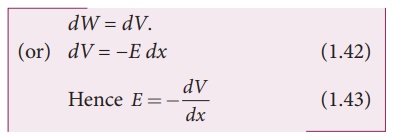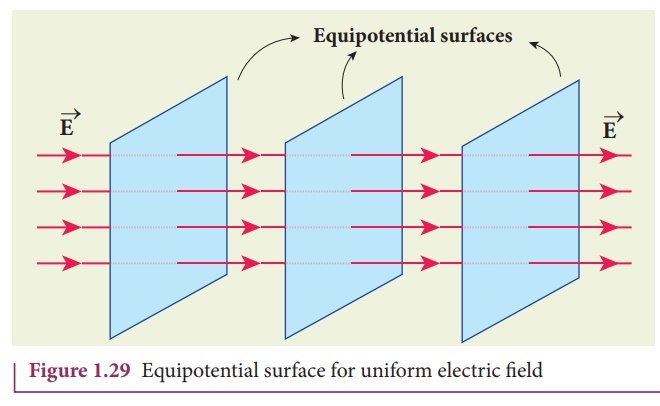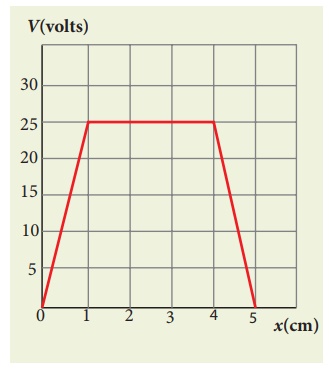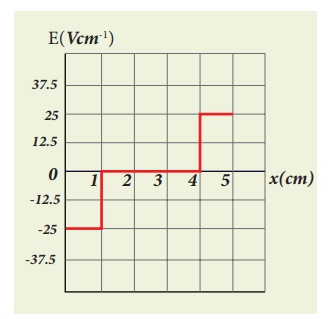Electrostatics - Relation between electric field and potential | 12th Physics : Electrostatics
Chapter: 12th Physics : Electrostatics
Relation between electric field and potential
Relation between electric field and
potential
Consider a positive charge q kept fixed at the origin. To move a unit positive charge by a small distance dx in the electric field E, the work done is given by dW = −E dx. The minus sign implies that work is done against the electric field. This work done is equal to electric potential difference. Therefore,

The electric field is
the negative gradient of the electric potential. In general,


EXAMPLE 1.14
The following figure
represents the electric potential as a function of x – coordinate. Plot the
corresponding electric field as a function of x.

Solution
In the given problem,
since the potential depends only on x, we can use  (the
other two terms ∂V/∂y and ∂V/∂z are zero)
(the
other two terms ∂V/∂y and ∂V/∂z are zero)
From 0 to 1 cm, the
slope is constant and so dV/dx = 25V cm−1.
So ![]() = −25V cm−1
= −25V cm−1 ![]()
From 1 to 4 cm, the
potential is constant, V = 25 V. It implies that dV/dx = 0. So ![]() = 0
= 0
From 4 to 5 cm, the
slope dV/dx = −25V cm−1.
So ![]() = +25V cm−1
= +25V cm−1 ![]()
The plot of electric
field for the various points along the x axis is given below.

Related Topics